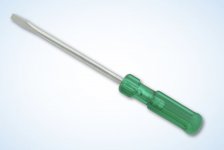After removing the speedometer I could lay eyes on the back of the start switch and all three wires--the two whites and one white/red--seemed in place under the jam screws, reinforcing my belief that the switch was defective.
I removed the switch and, despite my assumption, I decided to check it for continuity. Lo and behold the circuit closed when the button was pushed.
At this point I had already removed the wires and, thinking that perhaps one of them was open I turned the key on and touched the white/red to the two whites--and the engine turned over!
I can only surmise that there was corrosion under one or both of the jam screws.
By now I had been working in a hunched over position for about 1.5 hours so I decided to finish up things tomorrow. However, so that I would be able to sleep tonight I temporarily reconnected the wires to the switch and pushed the button. Voila--we have ignition!
To be continued, hopefully tomorrow or Thursday.

 Hi Guest!
Hi Guest!

 smilie in place of the real @
smilie in place of the real @
 Pretty Please - add it to our Events forum(s) and add to the calendar! >>
Pretty Please - add it to our Events forum(s) and add to the calendar! >> 


